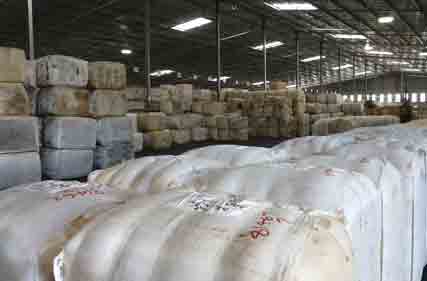 Exporters approached with cautious bidding as the market continues to make weekly adjustments to try and align with the current overseas demand pressures, with no real clear signal at this point.
Exporters approached with cautious bidding as the market continues to make weekly adjustments to try and align with the current overseas demand pressures, with no real clear signal at this point.
The return of South African Wool sales after a 7 month hiatus will definitely have an impact on our export markets with the superfine categories giving back over 100c this week.
The AUD fell over 1.5c this week which meant the EMI in US terms closed on 886c – down 29c, and breaching a 23 month run above 900 USc.
The AWEX EMI closed the week on 1319c – down 11c at auction sales in Australia last week with 37,352 bales went to auction with 88.9% clearance to the trade with all Australian selling centres operating.
| Merino Fleece had three distinct market sectors with the 16.5-17.5μ MPG’s washing off 70-125c across the eastern sea board. The markets have seen some isolated lots over the past few weeks indicating some weakness in this category.
The true negativity of the market sentiment materialised with scant competition from the European sector which in turn influenced the Chinese top makers to proceed with caution. 18-18.5μ were slightly cheaper and affected by the transition from last week’s superfine series to this week’s slightly lesser style offering. Best style and specified fleece lots were least affected by the market pull back. 19 and coarser displayed more confidence posting rises of up to 25c in the Eastern selling centres and 30c in the west. Merino Skirtings experienced similar falls to the fleece on Tuesday but experienced new-found support as Wednesday’s market stabilised. Skirting lots with best style and specifications were keenly sought after especially the low VM lots. Lots containing cott, colour and heavy VM were more heavily discounted. Crossbred Combing wools that were well prepared, exhibiting best style and specifications, traded sideways whilst the poorly classed and specified lots remain hard to sell. With the 28μ and 30μ MPG’s in the lowest percentile ranking over the past 10 years, the outlook for crossbred does not look too bright in the short-medium term. |
| Merino Cardings held their ground with slight rises of 3 and 6c in the Northern and Southern selling centres. Whilst the finer end of the market has been struggling to maintain its price levels, 19.5μ to 21μ seem to have found a basis that Chinese mills are happy. The downward correction of the superfine and fine wools has been a culmination of a couple of key factors: |
